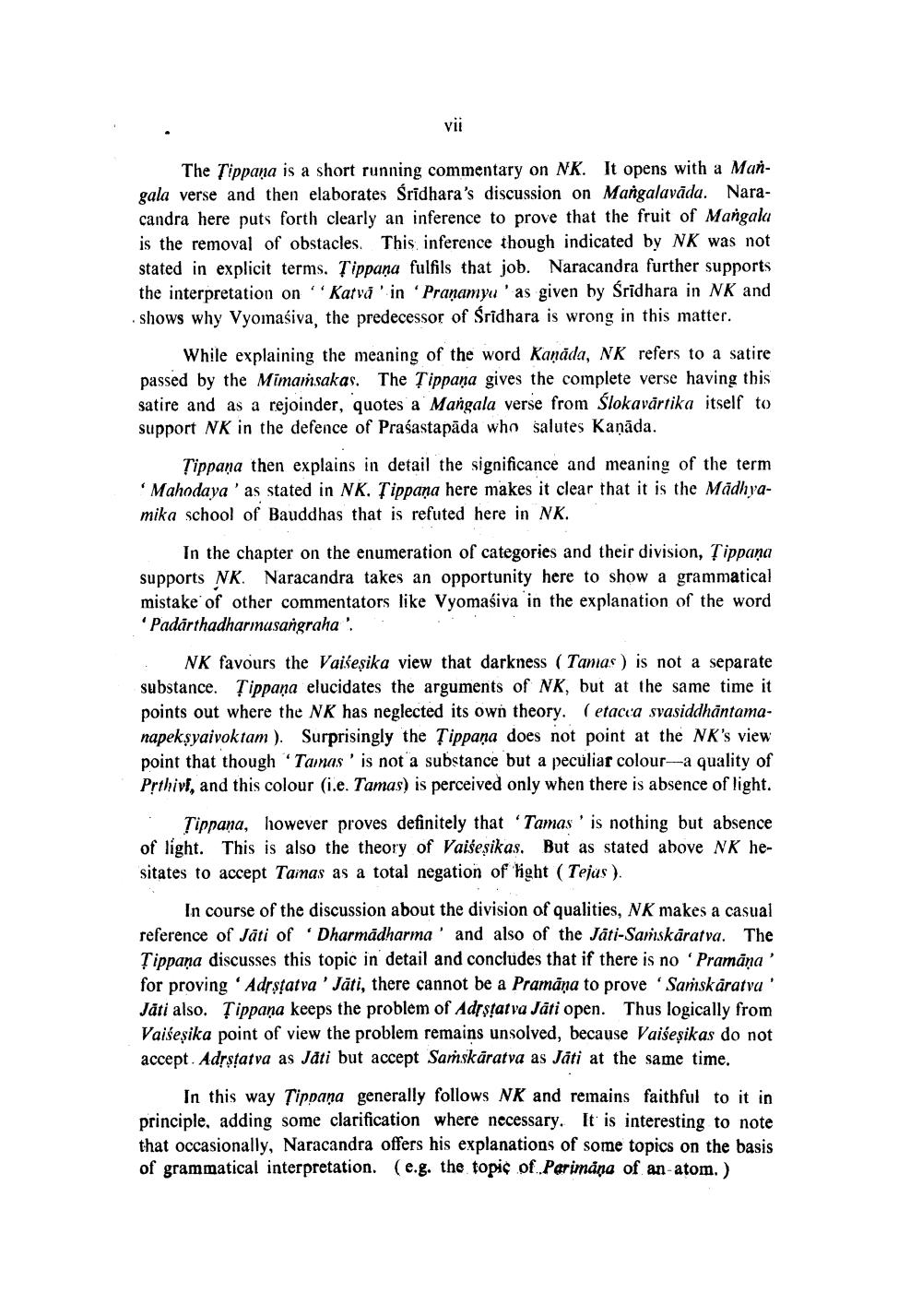________________ Vij The Tippana is a short running commentary on NK. It opens with a Mangala verse and then elaborates Sridhara's discussion on Mangalavada. Naracandra here puts forth clearly an inference to prove that the fruit of Mangala is the removal of obstacles. This inference though indicated by NK was not stated in explicit terms. Tippana fulfils that job. Naracandra further supports the interpretation on Katva' in Pranamyu' as given by Sridhara in NK and shows why Vyomasiva, the predecessor of Sridhara is wrong in this matter. While explaining the meaning of the word Kanada, NK refers to a satire passed by the Mimamsakas. The Tippana gives the complete verse having this satire and as a rejoinder, quotes a Mangala verse from Slokavartika itself to support NK in the defence of Prasastapada who salutes Kanada. Tippana then explains in detail the significance and meaning of the term 'Mahodaya' as stated in NK. Tippana here makes it clear that it is the Madhyamika school of Bauddhas that is refuted here in NK. In the chapter on the enumeration of categories and their division, ? ippana supports NK. Naracandra takes an opportunity here to show a grammatical mistake of other commentators like Vyomasiva in the explanation of the word Padarthadharmasangraha! NK favours the Vaisesika view that darkness (Tamas ) is not a separate substance. Tippana elucidates the arguments of NK, but at the same time it points out where the NK has neglected its own theory. (etacca svasiddhantamanapeksyaivoktam ). Surprisingly the Tippana does not point at the NK's view point that though 'Tamas' is not a substance but a peculiar colour--a quality of Prthivi, and this colour (.e. Tamas) is perceived only when there is absence of light. Tippana, however proves definitely that 'Tamas' is nothing but absence of light. This is also the theory of Vaisesikas. But as stated above NK hesitates to accept Tainas as a total negation of light (Tejus ). In course of the discussion about the division of qualities, NK makes a casual reference of Jati of Dharmadharma' and also of the Jati-Sarskaratva. The Tippana discusses this topic in detail and concludes that if there is no 'Pramana' for proving 'Adrstatva 'Jati, there cannot be a Pramana to prove 'Samskaratva' Jati also. Tippana keeps the problem of Adrsat va Jati open. Thus logically from Vaisesika point of view the problem remains unsolved, because Vaisesikas do not accept. Adrstatva as Jati but accept Samskaratva as Jati at the same time. In this way Tippana generally follows NK and remains faithful to it in principle, adding some clarification where necessary. It is interesting to note that occasionally, Naracandra offers his explanations of some topics on the basis of grammatical interpretation. (e.g. the topic of Parimana of an-atom.)




